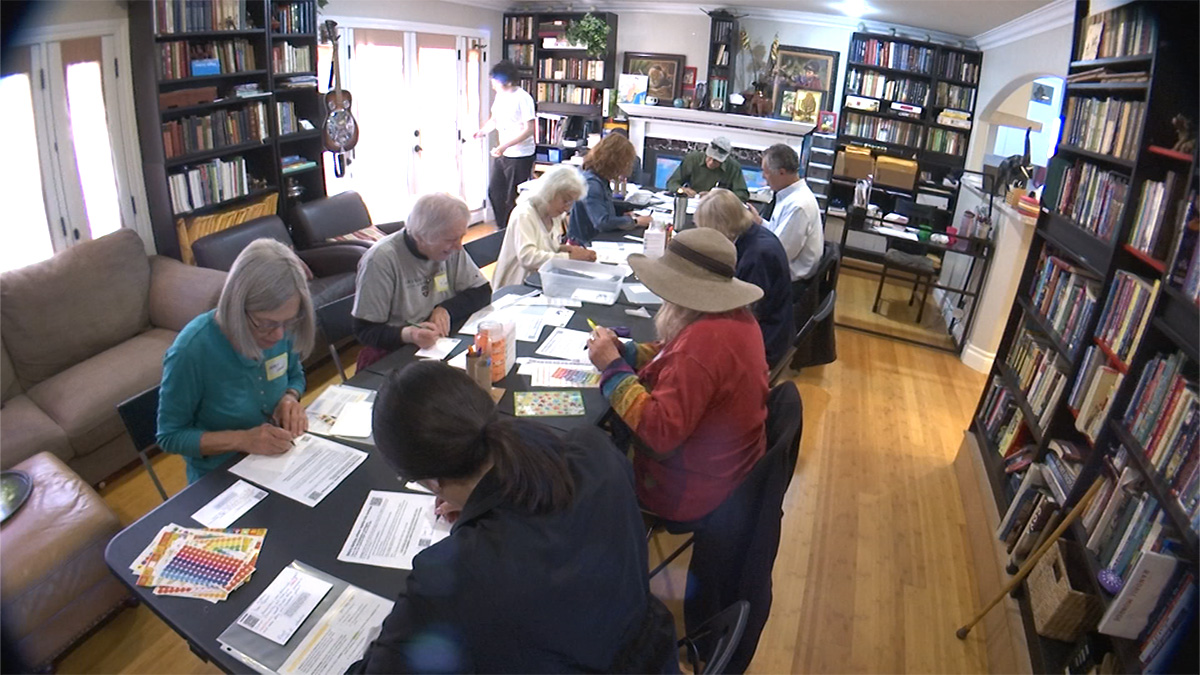For at least two months, Google employees were exposed to excessive levels of a hazardous chemical after workers disabled a critical part of the ventilation system at the company’s new satellite campus on a Superfund toxic waste site, records show.
From mid-November to mid-January, levels of trichloroethylene, or TCE, exceeded concentrations considered safe by the federal Environmental Protection Agency at a Google office complex in Mountain View, according to a detailed report to the EPA obtained by the Center for Investigative Reporting.
The buildings sit on a Superfund site three miles from the company’s headquarters.

TCE, an industrial solvent used in making computer chips, is known to cause cancer and birth defects. The EPA recently adopted a more stringent safety threshold for TCE after finding it can cause cardiac abnormalities in developing fetuses.
Pregnant women who are exposed to low levels of the chemical during a crucial three-week period in their first trimester face an increased risk of having a baby born with holes in the heart, a 2011 EPA analysis found.
In response to questions from CIR, the EPA said last week that it would “take a more aggressive approach to ensure prompt action” when TCE levels at the Superfund site exceed safe levels. The agency also said women of childbearing age should consult a doctor if they are concerned they were exposed to TCE.
“While EPA cannot verify how many employees were in the Google buildings in question, we encourage women who are concerned about potential exposure to contaminants at the site to speak with their obstetrician or pediatrician,” agency spokesman David Yogi said in an email.
More than 1,000 employees work in the two buildings where elevated levels of TCE were found. Google confirmed that employees were exposed to the hazardous chemical but would not say how many.
Google spokeswoman Katelin Todhunter-Gerberg said employees in the two buildings had access to information on the company’s intranet, but she declined to say whether they were warned of any health risk. She said employees were never in danger.
“We take several proactive measures to ensure the healthiest indoor air environment possible in our workplace,” she said by email.
Google, which was not involved in manufacturing chips with TCE, is a newcomer to the Superfund site. It leased buildings previously occupied by Netscape Communications and began moving employees in last summer.
During the 1960s and '70s when computer chip manufacturers such as Intel Corp., Fairchild Semiconductor Corp. and Raytheon Co. occupied the site, large quantities of contaminants leaked or were dumped there.
In 1981, TCE was discovered in the soil and groundwater beneath the three companies’ plants. The federal government designated the area as a Superfund site, and since 1989, more than 100,000 pounds of TCE and other contaminants have been removed.
When Netscape occupied the Google site, a controversial “air stripper” operated there for more than a decade, emitting toxic chemicals into the air without monitoring, according to Lenny Siegel, executive director of the Center for Public Environmental Oversight, an activist group based in Mountain View. In 1999, Netscape was acquired by AOL, which declined to comment.
The Superfund site covers about 400 acres above the contaminated plume in a Mountain View neighborhood near Middlefield Road, Whisman Road and Ellis Street.
The site is now home to about 85 businesses, including the software firm Symantec Corp., the insurance company eHealthInsurance, a patent law firm, a baby ultrasound center, an adoption service, a restaurant and a cafe. All told, thousands of people work at the site. Companies contacted by CIR declined to discuss any potential health risk.
Google leases its campus from Keenan Lovewell Ventures, a Palo Alto property developer. Perry Palmer, the partner who handled the lease, would not discuss any disclosure he may have provided Google.
Over the years, the plume of contamination has spread to surrounding residential neighborhoods and nearby Moffett Field. In December, TCE was found under more homes outside the boundaries of the Superfund site.
The main threat from TCE is posed by vapors from the contaminated groundwater seeping into buildings and accumulating in interior spaces.
The new Google campus features four two-story office buildings linked by steel-reinforced fences that require a key card to enter. Inside is a stretch of grass and food carts, giving the area the feel of a college campus.
On a recent afternoon, young women, pregnant women and visitors with young children could be seen relaxing in the courtyard. One Google employee who was visibly pregnant was asked if she was aware of risks associated with TCE exposure.
“We’re really not allowed to talk about it,” she said. “Sorry.”
The danger of vapor intrusion into buildings was not as well understood when the EPA and the city of Mountain View agreed in the 1990s to allow commercial use of the site.
In 2012, the EPA’s Region 9, which oversees California, began setting stricter standards for TCE exposure.
Region 9 now requires that it be notified if the level of TCE in a building exceeds the safety threshold of 5 micrograms per cubic meter of air. One recent EPA document indicates that prolonged exposure at even lower levels may cause cancer.
Since 2011, the EPA also has required that new buildings at the Mountain View Superfund site have subslab ventilation systems and vapor barriers to prevent TCE from accumulating indoors.
But since the Google campus was renovated, not newly built, the company relies on a “positive pressure” ventilation system to pump fresh air into the building and keep toxic vapors from collecting.
A 1,300-page report prepared by environmental consulting firm Geosyntec Consultants, Inc. and obtained by CIR from the EPA details the extent of the contamination at the Google site and efforts to correct it. The report was commissioned by Schlumberger Technology Corp., the oilfield services company, which acquired part of the site in 1979 and assumed legal responsibility.
The problem at Google was discovered when routine air sampling found TCE at a level of 7.8 micrograms per cubic meter in a hallway of one building on Nov. 21. The EPA was notified as required. It is unclear how long the levels had been above the danger threshold. The previous sampling in September 2010 found nearly nondetectable levels.
In an effort to reduce the vapors, workers sealed cracks in floors and walls where TCE might get in. But despite their efforts, samples collected on Dec. 29 found the problem was getting worse: TCE exceeded the 5-microgram safety threshold in five locations in two of the four buildings.
On Jan. 14, the team finally inspected the heating, ventilation and air conditioning system (often referred to as HVAC) and found it had been switched to manual, which prevented the positive pressure system from running continuously.
The move was motivated by a desire to keep the buildings warm as the weather turned colder in the fall, the report shows.
“The HVAC systems were operating in a manual mode (i.e. automatic system was overridden) in order to maintain the temperature in the buildings,” the Geosyntec report concluded.
The system was reset to automatic on Jan. 19. Three days later, tests showed that TCE vapors in the offices had been reduced to acceptable levels.
If employees were exposed to dangerous levels of TCE without warning, Google could be vulnerable to legal action under Proposition 65, California’s tough anti-toxics law, which sets a cancer risk threshold of 50 micrograms of TCE per day. Someone working in an office with TCE vapors measuring 5 micrograms per cubic meter would inhale that amount in 10 hours.
After CIR questioned why there was no risk level for birth defects under Prop. 65, the state Office of Environmental Health Hazard Assessment announced last week that it would examine whether TCE also should be listed as a chemical known to the state to cause reproductive harm.
The EPA said in its email to CIR that it would establish a new notification system for companies at the site and launch a website to provide information to the public. It also said it will make its toxicologists available to speak with employees’ physicians about TCE.
“Everyone who works or lives near the (Mountain View) Superfund site should have access to clear and timely information about the contaminants at the site,” said EPA Region 9 Administrator Jared Blumenfeld.
NBC Bay Area will air a report on the topic today at 6 p.m. NBC Bay Area was the first to report on this issue a year ago.
Click here to see related stories:
Inspector General to Audit NASA Agreement
Moffett Field Toxic Plume Concerns
Local
Concerns for Mountain View Toxic Plume Expanded
EPA Superfund Sites Cause New Toxic Plume Concerns
Republican Senator Questions Google's Use of Moffett Field
This story was edited by Richard C. Paddock and copy edited by Christine Lee.
The independent, nonprofit Center for Investigative Reporting is the country’s largest investigative reporting team. Visit www.cironline.org. The reporters can be reached at srust@cironline.org, mdrange@cironline.org.



